Paarhammer is having an extended closure over the Easter period.
We will close on Thursday the 17th of April and will re-open on Monday the 28th of April.
Click here to view our latest blog
Choose Windows Wisely
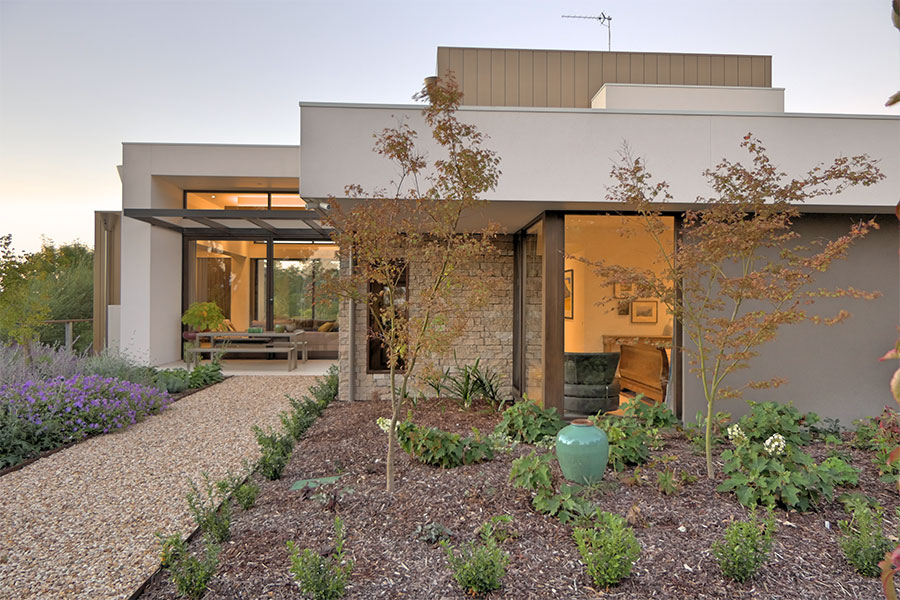
With windows being a significant cost factor of a new home, it is worthwhile to start your decision-making process early. Already at the design stage, consider how the build will work, how the position of windows and doors will allow for airflow through the space, and how and where doors will provide access. Design for natural light and solar heat gain in winter, and shading requirements in summer, and plan carefully with current and future needs in mind.
Building Envelope
Priority must be given to creating a well-insulated building envelope - walls, floor, roof and windows. All these are items that should last a lifetime and are not easily changed later. To replace any of the building envelope elements like windows and doors is also a costly exercise. By comparison, exchanging floorcoverings or even updating a kitchen is an easier process. Therefore, the building envelope including windows and doors is crucial to be decided upon at the very beginning.
Glass to floor ratio
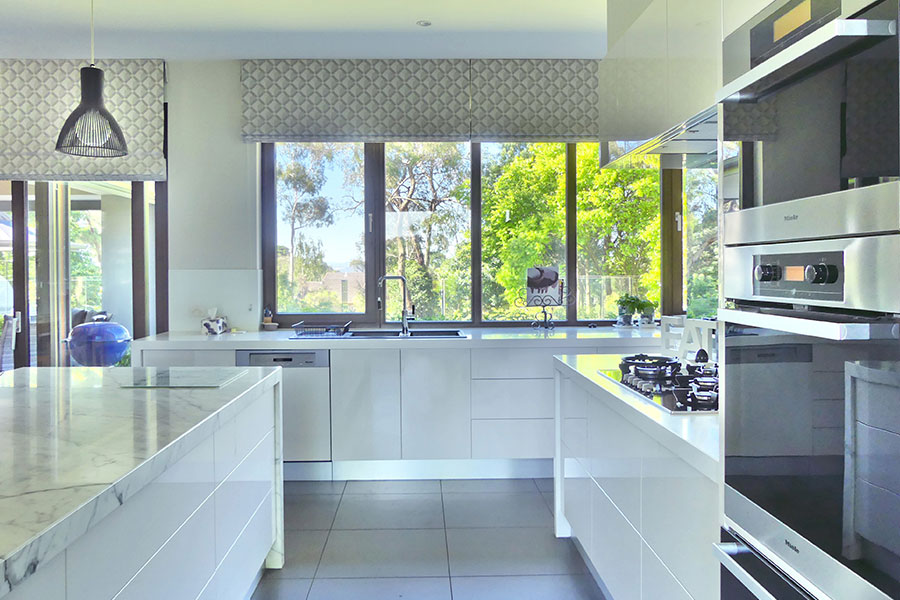
As a general rule, around 25% of the total floor area of the house should be glass. There are minimum requirements, governed by building regulations, e.g. a minimum of 10% glass is required in any habitable room in Victoria.
Orientation
When designing a new home it is important to allow for larger windows facing north so the winter sun will warm up the rooms. South-facing glazing will not receive direct sunlight in winter and only a little in the early morning or late afternoon in summer. Therefore, keep south-facing windows small so that heat is not lost in winter while heat gain in summer is reduced. East and west-facing windows receive much sunlight in summer and are prone to overheat the house, hence keep windows small.
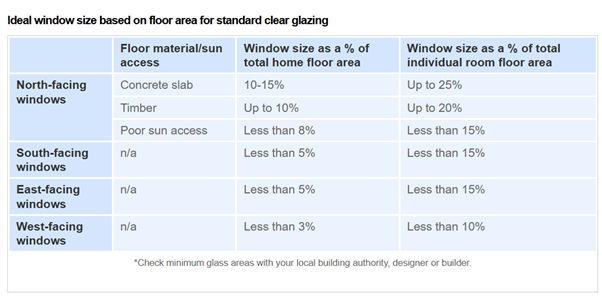
Image: Build
Enjoying views
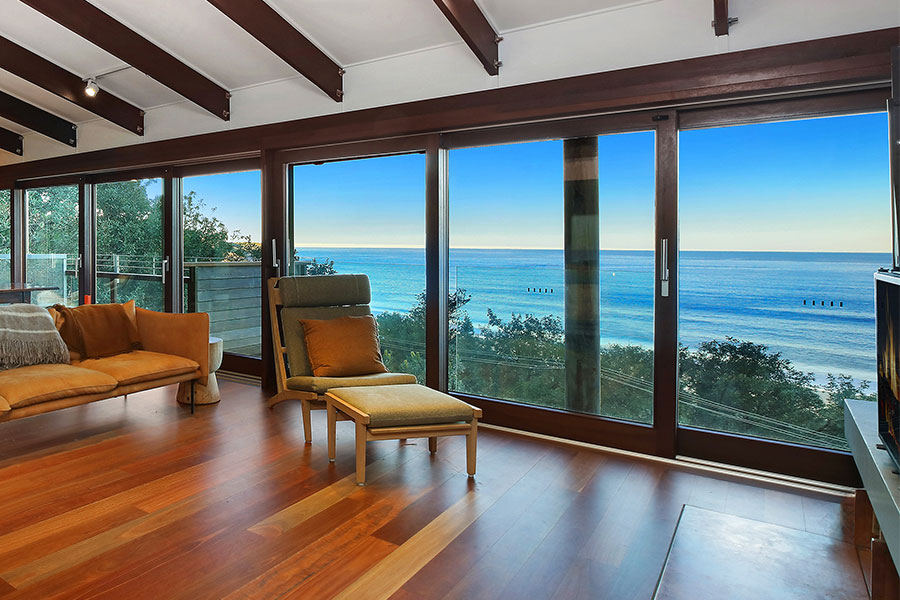
If magnificent views are to the south, east or west, it is common to make windows larger in these directions. To still achieve a thermally comfortable home, it is important to choose high-performance windows with a low U-value and invest in external shading.
Openable or fixed
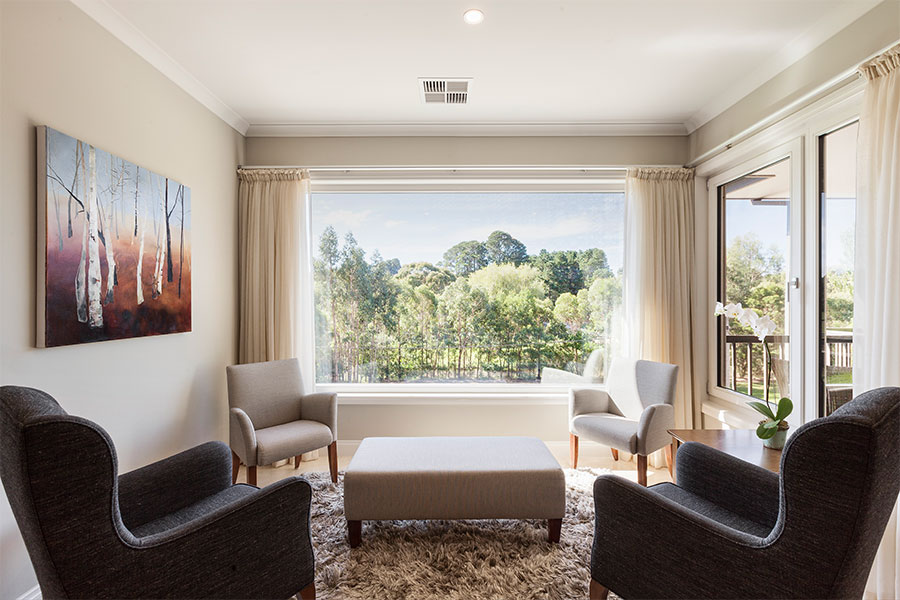
Windows with different opening options are available in Australia with tilt&turn opening becoming more and more common. These are windows that feature two opening positions (tilt for ventilation, turn for cleaning) as well as seals and many locking points, vastly reducing drafts when closed. Drafts are the enemy of energy efficiency, as heat will be lost through the gaps in winter, and gained in summer, which means higher heating and air-conditioning costs.
Fixed windows where no ventilation is required are more economical than openable ones, and it is wise to put money saved by using some fixed glazing towards increasing energy efficiency, e.g. choose double glazing instead of single glazing, or triple glazing instead of double glazing, thereby reducing energy needs for the life of the home.
Materials
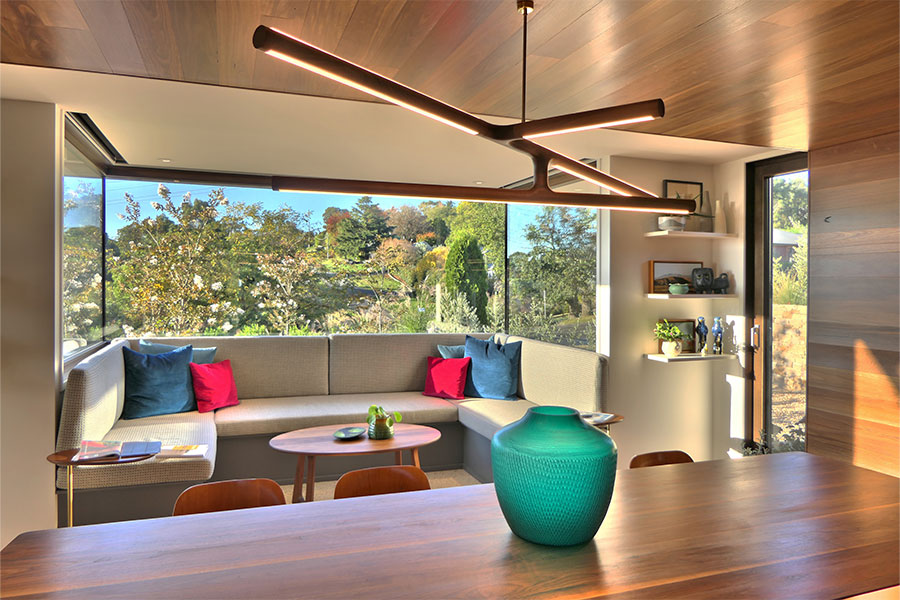
Consider the environment when choosing window frames. Timber is a sustainable material that regrows and has many times better resistance to heat transfer than other materials, making it more energy-efficient. The manufacture of wood products typically also requires far less energy. Timber is a product that promotes well-being as interaction with nature can relieve stress, increase health and encourage a positive mindset (biophilia).
To achieve all the benefits of a sustainable and well-insulated home and save money in the long term, choose windows wisely.
Ready to choose windows an doors for your home or next project? Contact us